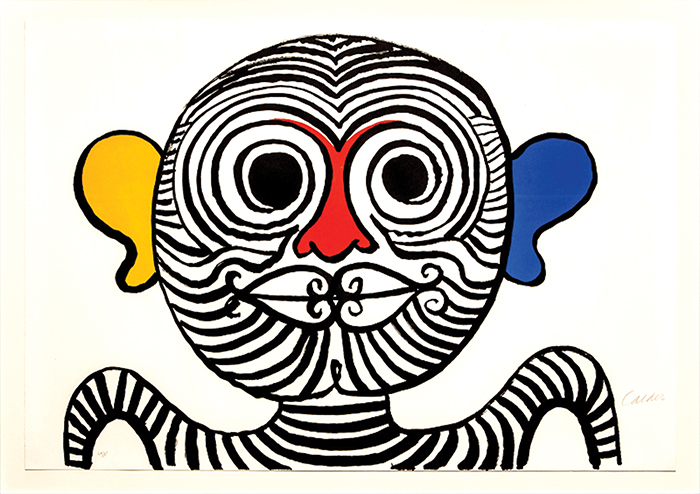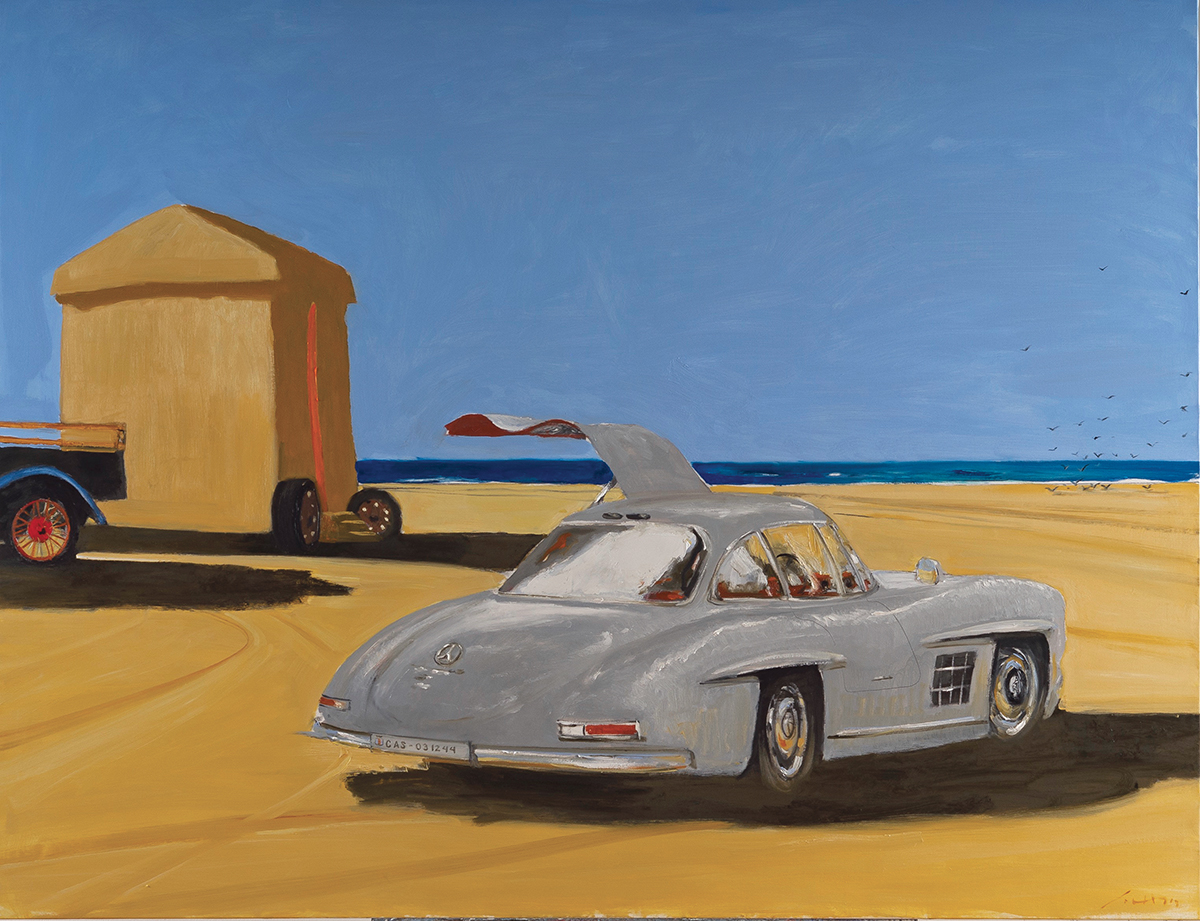One of the many glorious aspects of living in the Wood River Valley is that despite the fact that we are nestled among some of the most spectacular mountains in the world in the middle of nowhere in Idaho, we still have access to the amenities that one would find in a major metropolitan area: world class couture, cuisine, music—and international art.
International art is a term that is often loosely bandied about on the assumption that any artist who has shown work outside the boundaries of his or her homeland must be international. But gallery owners in Ketchum who represent international artists have specific criteria as to what defines an international artist, the most important of which is resale value.
Gary Lipton of Lipton Fine Arts, Frederic Boloix of Frederic Boloix Fine Arts and Minette Broschofsky of Broschofsky Galleries agree that to be considered an international artist, the artist must have an international presence in galleries, auction sales, art fairs and museum shows, as well as a presence in secondary markets.
Boloix says the crucial distinction between international and emerging artists is their resale value. “When you are working with living artists, as I do, it is the artist who determines the price range,” he said. “Typically as the artist’s career progresses, the sales become more brisk, and you can track his price range over the years. Resale is based on longevity and presence in the market.”
The urbane Boloix, who speaks five languages and whose parentage is Spanish and Cuban, spent a number of years as a professional musician playing trumpet in European orchestras and jazz bands before entering the gallery business in the U.S. His life experience informs the kind of art he is drawn to. “My sensitivities and the way I look at the world are through the eyes of someone with European heritage,” he said. “I’m influenced by where I’ve worked, what I’ve seen and the museums I’ve admired through my life. I look for art that captures your attention even if what’s coming out is jarring or shocking. I’ll take that over boring or too safe any day!”
Boloix deals in 20th century masters such as Matisse, Magritte, Picasso, Chagall and Miro as well as contemporary artists such as Jose Bedea, Julio Larraz and Gustavo Acosta, three Cuban-born artists whose work—in very different ways—“hovers somewhere between real life and an imagined one,” as one critic described a Larraz canvas.
Boloix Fine Arts featured Bedia in a show last August and September. Artnet, the leading online resource for international art, says Bedia is known for his “neo-primitivistic” figurative style. Said the LA Times: he “marries the shamanic impulse with the vocabulary of modern abstract painting in his striking exhibition … Applying expressive paint handling to iconic figures and animals (or hybrids of the two), he reactivates imagery drawn from Native American and African spiritual traditions.” Bedia’s work hangs in the Whitney Museum of American Art, the Tate Modern and the Smithsonian Museum, to name a few.
Minette Broschofsky represents the iconoclastic Russell Young, known for his portraits of social icons caught in moments of vulnerability that expose the underbelly of celebrity. He screen prints iconic photographs onto linen, uses acrylic paint and enamel, and coats the works with diamond dust that glitters on the surface. One gallery described his impact thus: “He re-invents bold, sometimes brutal imagery turned upon itself in alienation … while bearing witness to the ambition and glamorous excesses of 21st century America.” His photographs of Marilyn Monroe and Jackie Onassis are simultaneously compelling and devastating.
Young’s 2016 exhibitions have ranged from Sao Paulo to Santa Barbara, and his work is in the White House, Getty and Saatchi Collections.
“I look for artists who are unique, whose work fits into the genre of art I do and who are reflective of their culture,” said Broschofsky. “The art world has become global through the Internet—explosively global in the last 10 to 20 years—and that’s very good for artists who were formerly isolated or politically suppressed.” She often finds her artists through gallery shows or art publications.
Broschofsky is the sole U.S. gallery representative of the Dutch artist Jan Grotenbreg. “One of my clients had seen his painting in a magazine and asked me if I could find that artist,” she recounted. “I found him, sold her a couple of pieces and immediately saw what else he had.” Grotenbreg uses concrete for abstract backgrounds in counterpoint to an almost photorealism of horses, bulls and birds in the foreground. “The effect is suggestive of weathered old frescoes or murals of the Middle Ages while at the same time looking quite modern,” commented Broschofsky.

“Black Man Face,” by Alexander Calder, 1970, at Lipton Fine Arts.
Gary Lipton of Lipton Fine Arts deals almost exclusively in 20th Century Masters such as Calder, Dubuffet, Miro, Jasper Johns and Saul Steinberg. His business model differs radically from other galleries in Ketchum in that he owns all of the work he shows—he doesn’t take work on consignment. He also boasts a buy-back guarantee: if after five days the buyer does not want the work and returns it in like condition, Lipton will refund 80 percent of what the buyer paid.
“I started collecting when I was 16,” said the Bloomfield Hills, Michigan, native. “I struggled to buy my first work, which was a Calder gouache, and started visiting art dealers and galleries. The ones I liked represented international art—so my eye was drawn to those artists from an early age.”
While Lipton buys only work that he would hang on his own walls, he makes no bones about being a for-profit business. “I had a hell of a year in this town because I sell name-brand artists and because of the Internet,” he said. “I sell all over the world because when people Google Chagall or Annie Leibovitz, my name comes up.
Currently Lipton is in the process of setting up a website for local artists he admires. “I’m doing this because I truly feel there are extremely talented artists in this Valley and being attached to my website will give them exposure, the Internet has become that profound.”
The Internet and technology allow Lipton to reside in this valley where he says, “God would live” and sell to an international audience. “I’ve had a lot of fun, no pressure, and I’m doing exactly what I want!”


